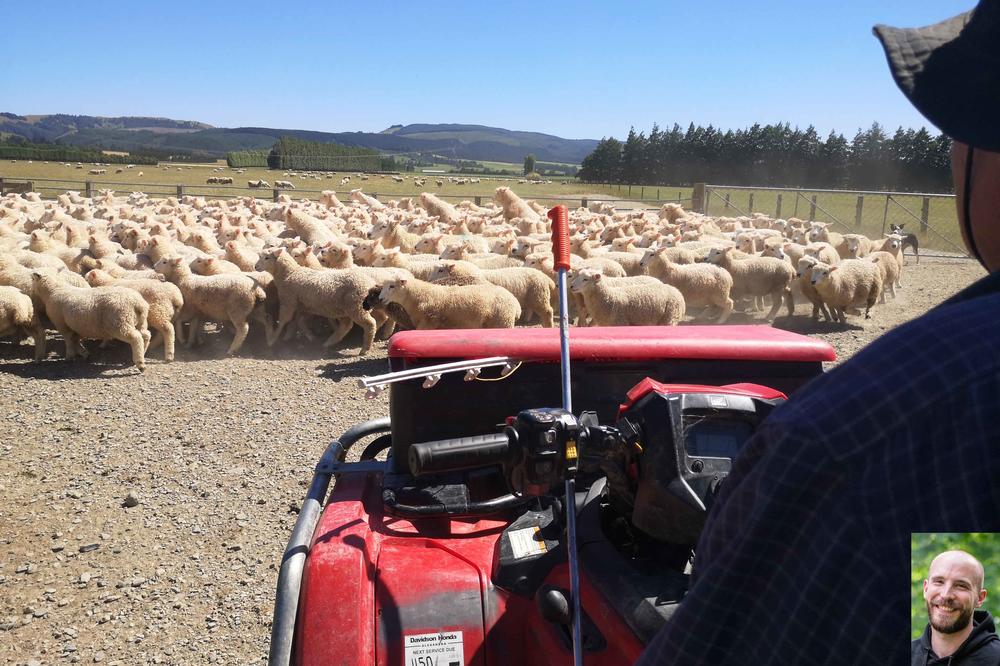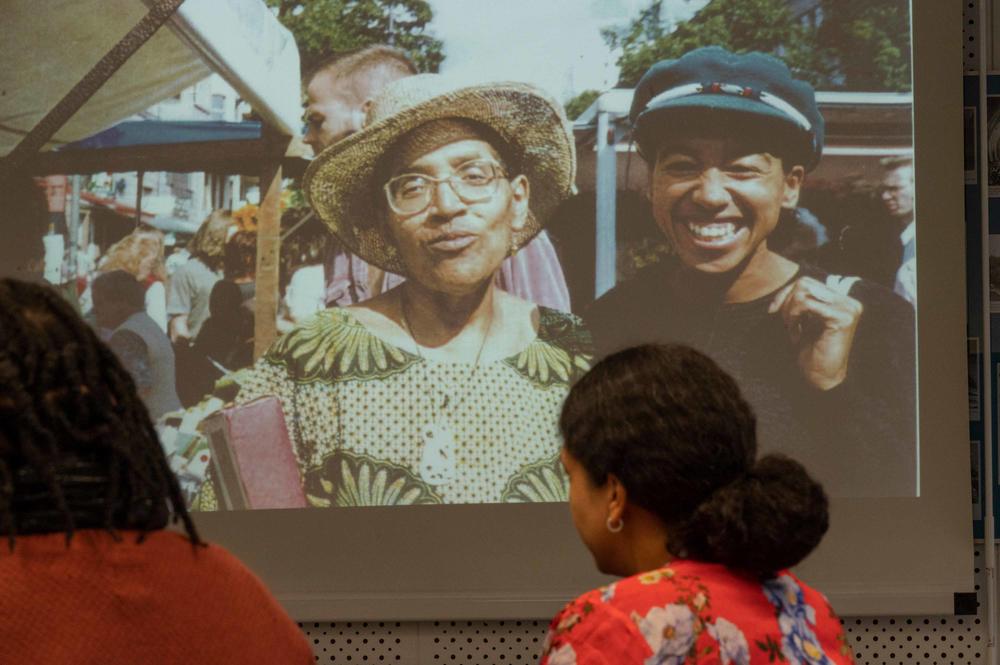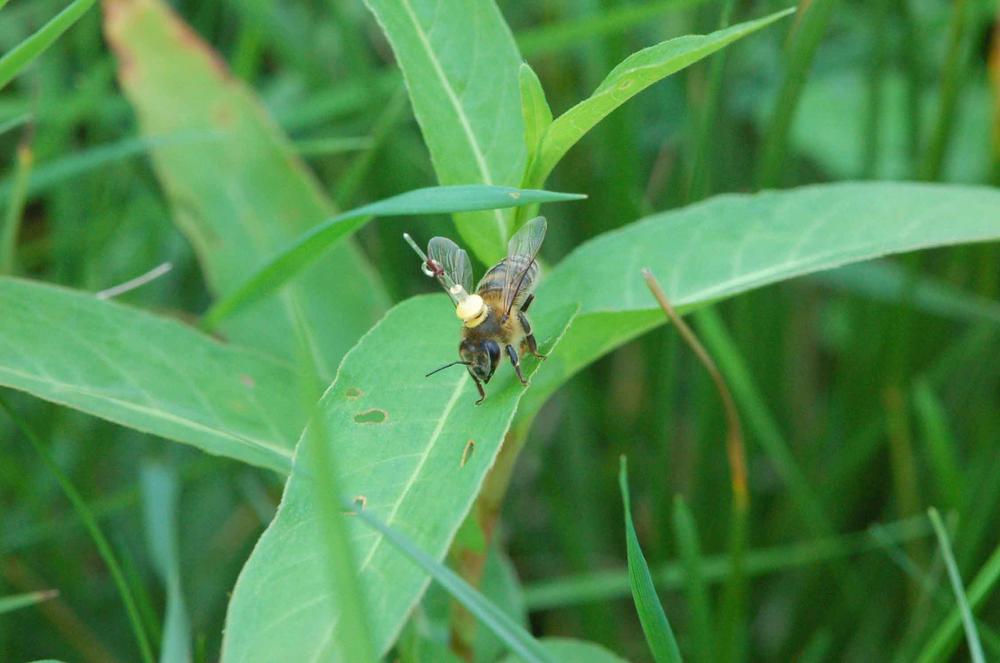Moments of the semester
70 Years of Mensa One - From Dahlem to New Zealand - May Ayim, Voice of Afro-German Literature - New Study on Tail Dance
May 24, 2023
A nice place for study breaks for seven decades: Mensa eins.
Image Credit: Universitätsarchiv Freie Universität Reinhard Friedrich RF_0107-03
70 Years of "Guten Appetit”
Happy Birthday Mensa eins
When Freie Universität began teaching in the winter semester of 1948/49, students and faculty were initially fed in a wooden cafeteria. At the beginning of the 1950s, the architects Hermann Fehling and Peter Pfankuch were commissioned with a new cafeteria building - it was the early major work of the two architects. This building in the functional modernist style of the 1920s was intended to stand out from the Dahlem villas and country houses as well as the neighboring Gründerzeit buildings of the former Kaiser Wilhelm Society. It was also intended to build a bridge to the new campus: opposite, barely 300 meters away, the Henry Ford Building was erected. Over time, the cafeteria building has been restructured several times. In 2010, Germany's first university vegetarian cafeteria, "Mensa FU Veggie No. 1," opened on the first floor. In 2020, it had to close due to the Corona pandemic, but after extensive remodeling, operations resumed in December 2022 with a Japanese-inspired concept and name; it is "Mensa Shokudō (FU I)."
For Thomas Conrad, a student of veterinary medicine, it was: study in Düppel - internship in New Zealand.
Image Credit: privat
From Dahlem to the other end of the world
Sheep ahead!
From New Zealand, more precisely from the tranquil town of Gore in the south of the two islands, it was "Kia ora - hello" for Thomas Conrad, a student of veterinary medicine at Freie Universität. During a six-week internship, he was able to familiarize himself with the special features of veterinary work in the land of the Kiwis. "The country's agricultural structures differ from those in Germany primarily in their size. On farms with several thousand sheep and cattle, routine tasks such as entering worming treatments have to be carried out extremely efficiently," Conrad relates. This is aided by a seasonal system. All sheep nationwide get their lambs at the same time and are castrated and vaccinated. In the exclusive free-range system, the animals are also bred for hardiness rather than high performance. The special island location and strict import controls have so far saved the country and its animals from many diseases common in Europe. "Unfortunately, because New Zealand agriculture is not subsidized and is subject to great international price pressure, veterinary options are limited, just as they are in this country," explains the budding veterinarian, "but they have the scenic view ahead of us."
May Ayim (right) is considered one of the most important voices in the black community.
Image Credit: Bernd Wannenmacher
Voice of Afro-German Literature
The estate of the poet, educator, and activist May Ayim is in the archives of Freie Universität.
Afro-German - that is how many black people in Germany describe and understand themselves today. May Ayim (right) was instrumental in coining the term. She is considered one of the most important voices in the black community. In 1984, Ayim moved to Berlin, where she met the eminent U.S. writer, scholar and activist Audre Lorde (left), who was then a visiting professor at Freie Universität. In the 1980s and 1990s, Ayim himself had served at Freie Universität: In the 1992/1993 winter semester, for example, she held a seminar on "Antiracism - Personal Awareness and Political Education." During her time in Berlin, Ayim published poetry as well as academic works, began training as a speech therapist, and became a co-founder of the initiative "Black People in Germany." In 1996, at only 36 years old, she takes her own life after a psychotic crisis. "We can offer the public a comprehensive look at May Ayim's personal, scientific, and literary career," says Dr. Birgit Rehse, director of the University Archives at Freie Universität. About six linear meters contain personal documents, evidence of her lectures, and manuscripts of her poems. Now another important piece of evidence has been added: May Ayim's thesis entitled "Ethnocentrism and Gender Role Stereotypes in Speech Therapy." The thesis was donated to Freie Universität in February 2023 by the "Logopädische Schule am Berliner Bildungscampus für Gesundheitsberufe gGmbH." The document was found by the literary scholar and historian Riccarda J. Schneider.
A small transponder can be used to read the location of a bee every three seconds.
Image Credit: Randolf Menzel
New study on the tail dance
Dancing Bee
Until now, it had been assumed that bees can only accurately navigate to targets from the hive. However, a new study by Prof. Dr. Randolf Menzel, a zoologist and neurobiologist at Freie Universität, and his team now extends this finding. "Bees are able to store the metric references between landmarks and read them out for the vector message of the tail dance in such a way that they can fly from any location to the place indicated in the dance," Menzel says. The study thus shows that bees' dance communication is much richer than previously thought. In addition, the results imply that bees have a metric landscape memory in which they can directly navigate to another location free of the location in question. "We know that they learn this complex and rich landscape memory during their exploratory flights as young bees," Randolf Menzel adds. For the study, the bees' flights were tracked with a special radar device. For this purpose, the bees wore a transponder via which their location was read out every three seconds.




